The fundamentals of cocoa are not changing day-to-day, but you might think so based on the frenetic trading in the iPath Bloomberg Cocoa SubTR ETN (NIB). Last week, NIB made another plunge toward an all-time low in the latest bout of selling that took NIB from $25.29 to as low as $21.70 (a 14.2% loss) in just 8 trading days.
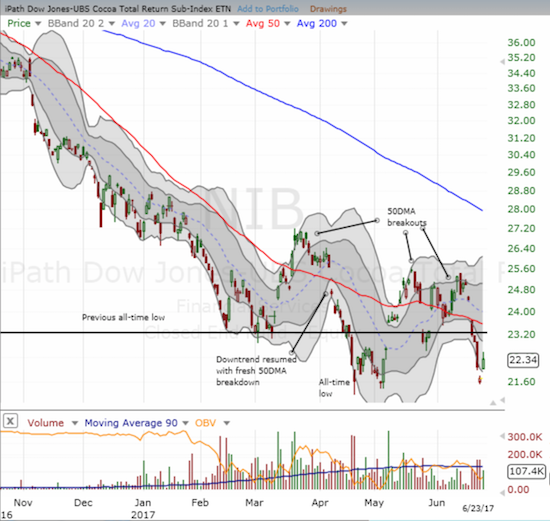
Source: FreeStockCharts.com
While the downtrending 50-day moving average (DMA) is clearly maintaining its grip on trading for NIB, at least NIB has not made a new all-time low. Moreover, lows have generally been met with a bout of frantic buying. I still think these technicals suggest a bottom in the making and are part of an extended, albeit wild, consolidation pattern. The latest plunge convinced me that it is time I try wearing the hat of a short-term trader for making money on NIB. I prepared to do a swing trade on NIB on Friday in order to move ahead of the next bout of buying. I was clearly too slow as NIB gapped up and never pulled back to my top buying point of $22.00. The last three days for a bottoming pattern called an “abandoned baby bottom.” I consider the bottom confirmed if NIB closes above the high of the first trading day of the pattern (above $23).
Seeing no real news to explain cocoa’s sudden plunge in price, I took a step back and reviewed the agricultural complex. First of all, the PowerShares DB Agriculture ETF (DBA), which includes cocoa, had a particularly rough week along with NIB. Like NIB it plunged on Wednesday and Thursday. For the week, DBA lost 3.5% and closed at a new all-time low on Thursday.
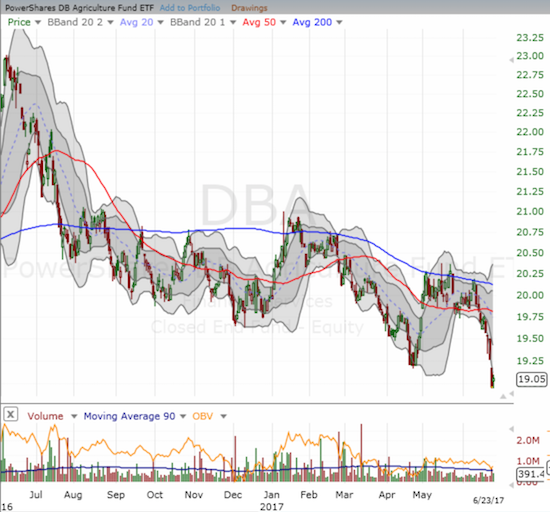
Source: FreeStockCharts.com
The list of ag casualties gives NIB some good company. The iPath Bloomberg Coffee SubTR ETN (JO) made an all-time low lask week. Close to all-time lows are Teucrium Corn ETF (CORN), iPath Bloomberg Sugar SubTR ETN (SGG), Teucrium Wheat ETF (WEAT), and Teucrium Soybean ETF (SOYB). Livestock stick out as a notable exception. I guess the price of feed is particularly low these days!
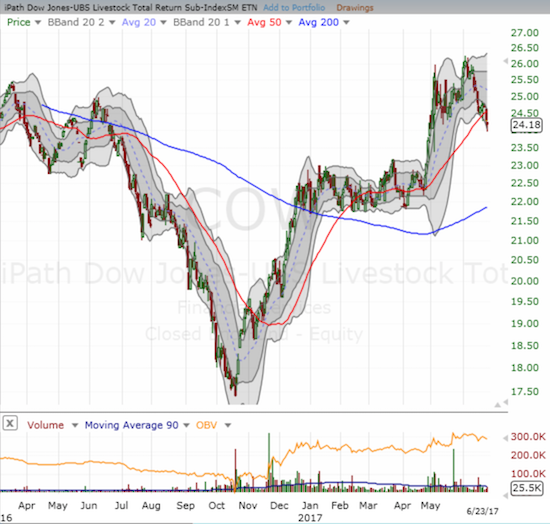
Cotton recently experienced a bearish breakdown, but at least it remains far above its all-time low around $23 and its post-recession low (set in 2016) around $35.50.
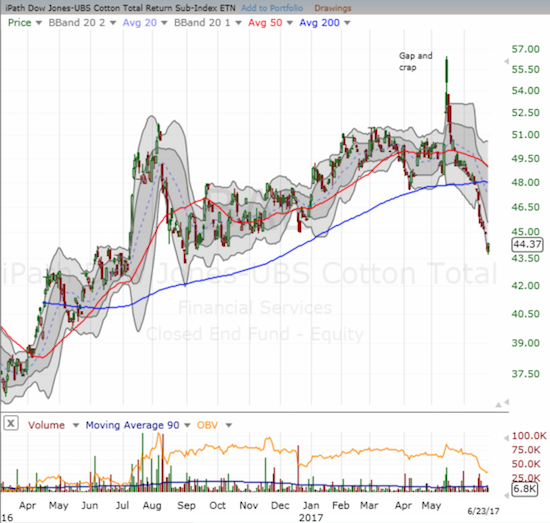
While BAL is doing its best to join the general ag deflation theme, Deere and Company (DE) is flashing all green signs. In the last 7 months, DE has experienced 2 bullish breakouts to new all-time highs. This trading behavior suggests that ag is fine, at least outside of the publicly traded ETNs and ETFs.
Here is how DE summarized the U.S. ag business in its last earnings report (from the Seeking Alpha transcript for May 13th)…
“Following a forecasted about 5% reduction in 2016 cash receipts, we expect 2017 total cash receipts plus government payments to be about $367 billion. This is roughly flat with 2016 as declines in meat animals and food grains cash receipts mostly offset gains in dairy and cotton cash receipts.”
Not great, but not awful either.
Based on DE’s recent trading record shown below, I think the current dip is buyable. DE is managing with what it calls stabilization:
“On an overall basis, we are seeing modestly higher demand for our products, with the agricultural sector in South America staging a strong recovery. At the same time, our performance reflects the actions we have taken to expand our customer base and operate more efficiently. We’re benefitting from the sound execution of our operating plans, the strength of our broad product portfolio and the steps we’ve taken to bring down structural cost. As a result of all these factors, we have raised our forecast and are now calling for significantly higher earnings for the full year.”
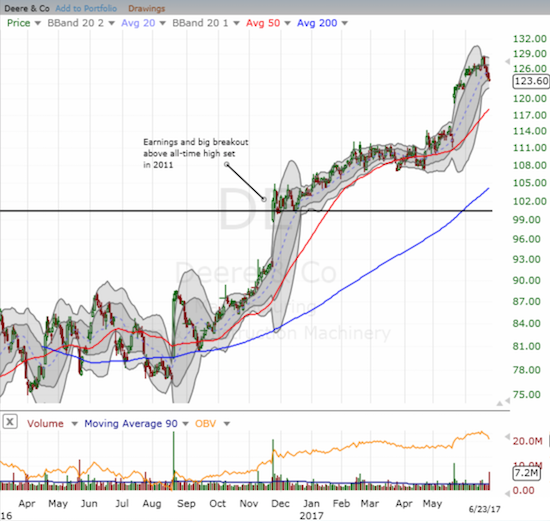
Source for charts: FreeStockCharts
Even with DE’s bullish signaling, there is enough carnage in the ag space to make me wonder whether part of cocoa’s problems go beyond over-supply and also extend to some generalized malaise particularly from aggressive speculators. Time will tell.
Be careful out there!
Full disclosure: long NIB, CORN
